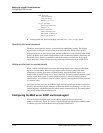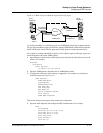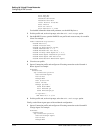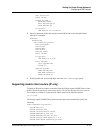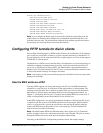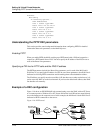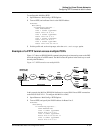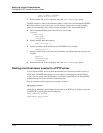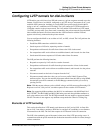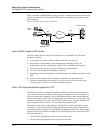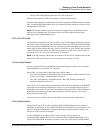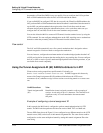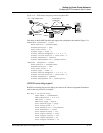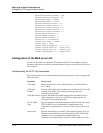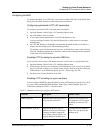
11-30 MAX 6000/3000 Network Configuration Guide
Setting Up Virtual Private Networks
Configuring PPTP tunnels for dial-in clients
Line 4 tunnel type=None
Route line 4=0.0.0.0
3 Exit the profile and, at the exit prompt, select the exit and accept option.
The PAC must have a route to the destination address, in this case a route through the ISP POP
#2. It does not have to be a static route. It can be learned dynamically by means of routing
protocols. The remaining steps of this procedure configure a static route to ISP POP #2:
4 Open an unused IP Route profile and activate it. For example:
Ethernet
Static Rtes
Name=pop2
Active=Yes
5 Specify the PNS destination address:
Dest=10.65.212.11
6 Specify the address of the next-hop router (ISP POP #2). For example:
Gateway=10.1.2.4
7 Specify a metric for this route, the route’s preference, and whether the route is private. For
example:
Metric=1
Preference=100
Private=Yes
8 Exit the profile and, at the exit prompt, select the exit and accept option.
Routing a terminal-server session to a PPTP server
You can initiate a PPTP session in which the terminal-server interface routes the session to a
PPTP server. The PPTP command gives you two options for selecting the tunnel the MAX
creates. You can specify either the IP address or hostname of the PPTP server. Normal PPTP
authentication proceeds once the MAX creates the tunnel.
Enter the command at the terminal-server prompt as follows:
pptp pptp_server
where pptp_server
is the IP address or hostname of the PPTP server. When you enter the
command, the system displays the following text:
PPTP: Starting session
PPTP Server pptp_server



